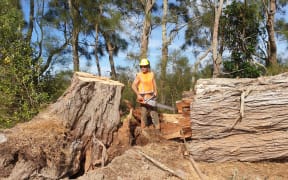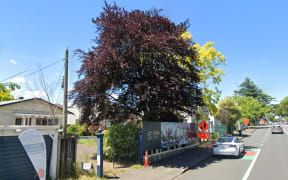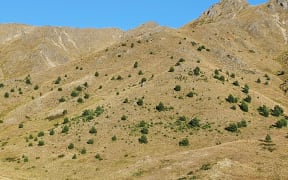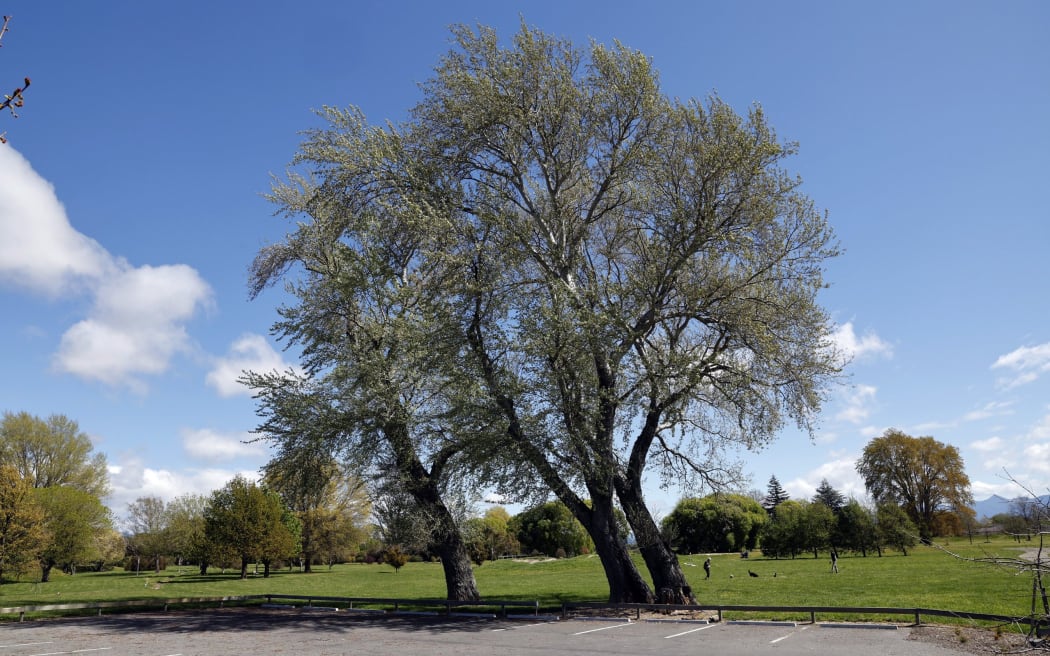
Three of the poplar trees at the Taylor River that will be removed. Photo: Stuff / Anthony Phelps
Deciding whether to chop a tree down has often been a fraught process at the Marlborough District Council, but new technology could change that.
X-ray technology has been used to check the health of large poplar trees along the Taylor River, with nine found to need removing.
One councillor said the technology could help the council be more "clear-cut" and could have saved a "lot of time and effort" in the past when he had fought for some trees from getting the chop.
Every year, the Marlborough District Council inspects larger trees along the Taylor River, which runs through the centre of Blenheim, in part because of "several life-threatening incidents" across Aotearoa where trees fell in public spaces.

The latest inspection identified 23 of the 40 poplar trees between High Street and Burleigh Road bridges needed further inspection by an arborist.
A report prepared for the council's assets and services meeting on 3 October said the tomograph's x-ray detected decay and cavities in standing trees, and measured trunk density.
It did this by measuring the trunks or branches' resistance to radio waves, the report said.
That testing showed nine trees with "varying degrees of decay" and it was recommended by the arborist that they be removed as soon as resources allowed.
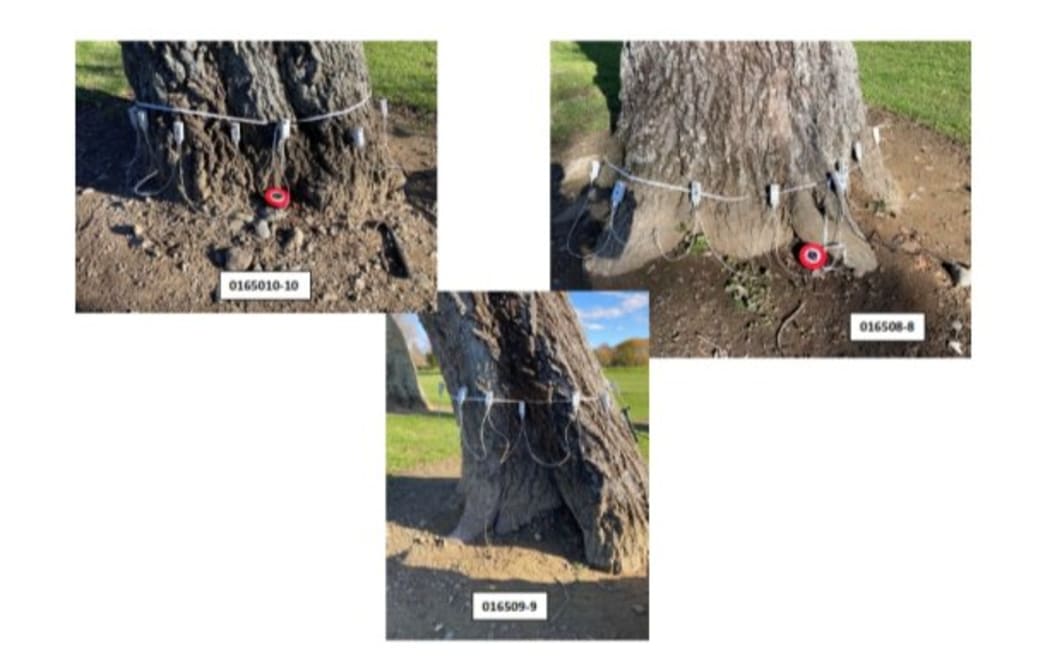
An arborist used radio tomography to determine the health of the trees. Photo: Supplied / Marlborough District Council
The arborist also provided mitigation options where "appropriate".
A section of the Taylor River Munro Street car park had been closed as a precaution against three poplars, parks and open spaces officer Robert Hutchinson said.
"We are requesting all three of those trees be removed, although only two of them are showing serious signs of rot and degradation," Hutchinson said.
"Because it will basically be at risk of falling over, because it's lost its protection from the two other trees that it's growing with.
"It's the only one that through the review process showed any major signs of rot."
Assets and services committee chairperson David Croad said the request to move the trees was straightforward, and it would be hard to argue with the science.
Blenheim ward councillor Jamie Arbuckle said in the past, the committee had been "accused of all sorts of different things when it comes to trees".
"But I must endorse this new technology," Arbuckle said.
"I must say it's clear-cut, because I think in the past, fighting for some trees around the district, it might have been quite neat to just put this new technology around then. We would have probably saved a lot of time and effort."
He went on to ask Hutchison how new the technology was, and how often it was used.
"If we are going to rely on it, it is crucial to know where it's come from," Arbuckle said.
Hutchinson said the technology had been around for 20 years, but had advanced in that time.
"It started off where you actually had to drill into the tree. Along with that, you used a hammer to check the density of the tree at the same time.
"Scanning has got better and better and better over time, to the point you no longer have to hammer into the tree.
"The tomo system - that's what I call it as a nickname - there's only three in New Zealand of this type. This is the one selected by the consultant as the preferred option.
"It is middle range, certainly not high range, but it is used around the world."
Arbuckle thought it would be good to check that the sensors were correct once the trees had been cut down.
Croad joked it would be "a little too late for that".
The tree removal requests were approved by the committee, subject to full council approval on 26 October.
The committee also agreed to cut down an unhealthy eucalyptus tree at the Waitohi Domain in Picton. That request had come from the iRex Ferry Terminal Redevelopment contractors, and would allow a bridge to be constructed for the project.
Local Democracy Reporting is Public Interest Journalism funded through NZ On Air
